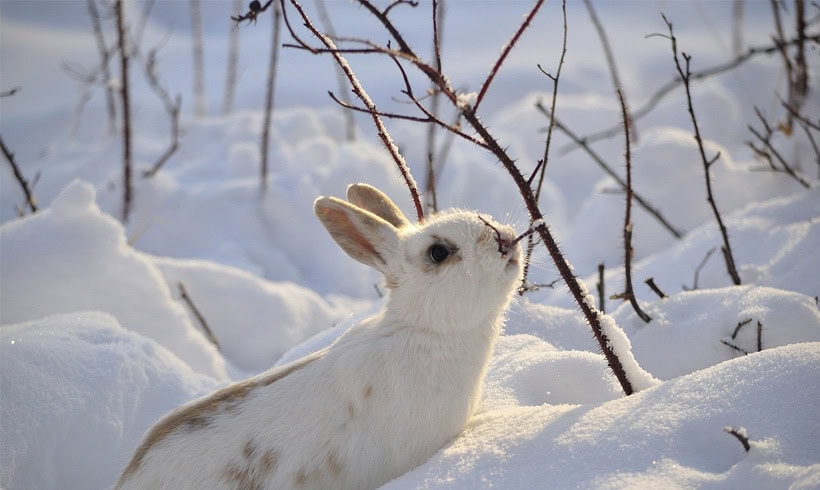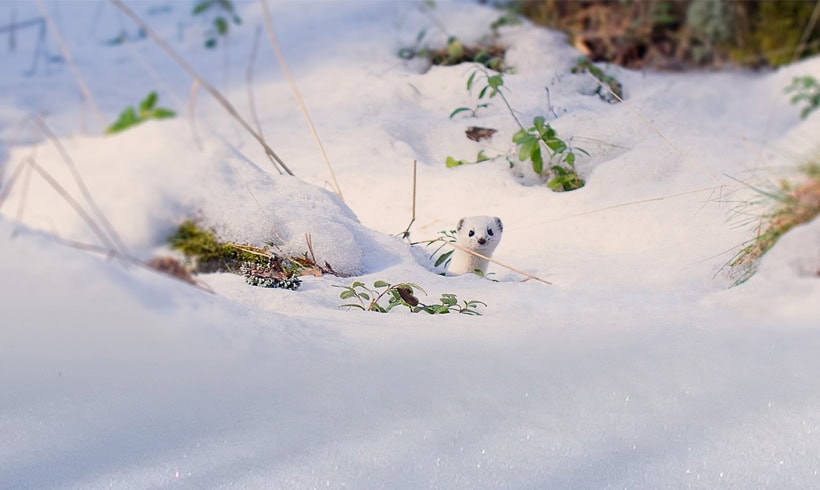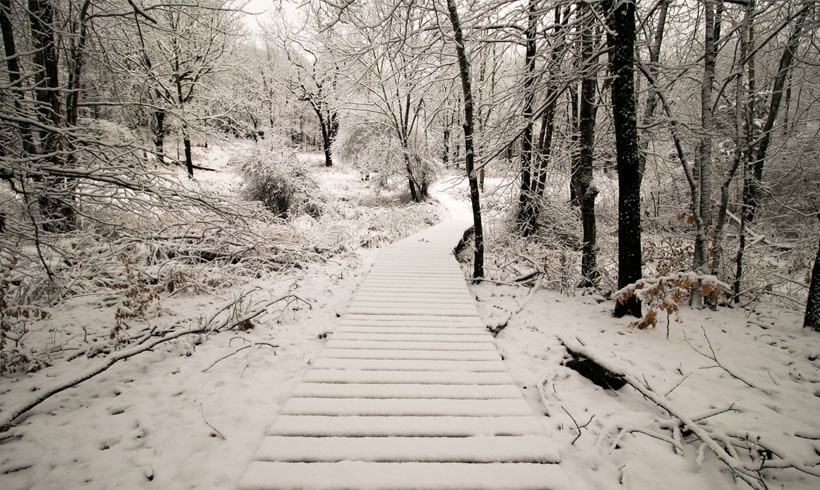Winter World
When the deer has bedded down
And the bear has gone to ground
And the northern goose has wandered off
To warmer bay and sound
It’s so easy in the cold to feel
The darkness of the year
And the heart is growing lonely for the morning
– Gordon Bok, “Turning Toward the Morning”
As we approach the fourth season of this pandemic, I wonder if the groundhog may have it right. Pass on the winter by burrowing down in a soft nest below ground when the autumn leaves fall and foraging becomes a chore. Emerge when green shoots are bringing promise and the world is brightening. Hibernation, the survival strategy that some animals employ, involves the cessation of non-vital physiological processes with a significant slowing of heartrate and lowering of body temperature. Although it seems like the ultimate way to get through the pandemic, it’s not for everyone!
Groundhogs, little brown bats, and jumping mice, are the only mammals that truly hibernate in New York. That pesky groundhog who decimated my garden in early autumn, was eating heartily to bulk up for its long winters sleep. During hibernation, a groundhog curls up in a ball, its temperature falls to as low as 38° F, and its heartrate drops from 100 beats per minute to 4.
Hibernating animals, surviving in their suspended state, of course, miss out on the winter.
My hikes on Teatown’s trails and other often overlooked places in the lower Hudson Valley have kept me sane through spring, summer, and fall. Now the winter world beckons with its first snowfall, and my thoughts turn from skipping the season altogether to embracing it, Sorels at the ready, layered up to enjoy the bare bones of winter.
There are days when the winter landscape seems devoid of life, with only a crow or jay announcing itself from a high perch. It takes a close look to find signs of animals that remain active in the woods and fields. The tiny footprints and tail drag of white-footed mice as they dig up from tunnels under the snow to run this way and that before digging down again. Chipmunks, those small bundles of pure energy, become semi-torpid in the winter, interspersing spates of torpidity (deep sleep) with a day or two of activity to eat and eliminate. Look for them on sunny days when the temperatures rise above freezing, emerging from their burrows, leaving small tracks in the snow. On stormy days and frigid nights, gray squirrels will take a break from scampering about the woods, and retreat to dens in tree cavities or to dreys, large leafy nests high up in trees. Coyotes and foxes are out and about looking for unsuspecting prey under the snow. Their tracks tell the story of a hunt, sometimes ending in the turmoil of ground disturbed with blood spatters and fur, marking the demise of a small mammal. On bare ground, the scat of animals may be the only clue that an animal has traveled the same path as you!
At my feeder, flocks of birds swoop in and out. This fall has brought an irruption of finch species to the Hudson Valley, with sightings of pine siskins and evening grosbeaks mingling with goldfinches, house finches, and purple finches. A shortage of conifer seeds in Canada’s boreal forests have caused the siskins to range south in search of food.
Robins and even bluebirds, those harbingers of spring, can often be spotted at Teatown in winter. They are known to overwinter and take to the thickets for cover, searching out the remaining berries and wild crabapples to see them through. Wearing a down coat helps, as we well know by the number of puffy jacket sales! The insulating effect of down trapping warm air between layers of feathers is a survival strategy of every bird that remains here in the winter.
Without leaves on the trees, spaces open up in winter. Each tree’s silhouette is different – gnarled trunks and limbs reaching for the sky, next year’s leaves already contained in unopened buds. The boulders and rock formations are more visible, their massive bulk supporting carpets of jewel-green mosses, whorls of gray lichen, and arching evergreen ferns. A walk through a meadow reveals winter weeds, standing with long-lasting seedheads, providing food for animals, and adding interest to the landscape.
It’s a few months before the weather warms, spring approaches, and the groundhogs begin to stir, slowly coming out of hibernation and joining the animals who have been active all winter long. Does it coincide with that most quixotic of holidays – Groundhog Day? I’ll leave it up to those meteorologists who every year use the groundhog to predict if spring will come to us early! Until then I may choose to hibernate on those snowy winter days, when a good book keeps me happy. Most of the time, though, I will don my winter gear and get outdoors where the winter world reveals its many delights to those who seek them out. The beauty and quiet solace of nature in winter will see me through this time – the world is always turning toward the morning.
About the Author
Phyllis Bock, Director of Education
Phyllis has worked at Teatown since October 1991, when she began as a volunteer Nature Guide. Ms. Bock possesses a BA Biology from Queens College, CUNY. As Education Director, she takes to heart Teatown’s mission and encourages young and old alike to embrace all that nature has to offer. She can often be found hiking or kayaking somewhere in the Hudson Valley.






Leave a Reply